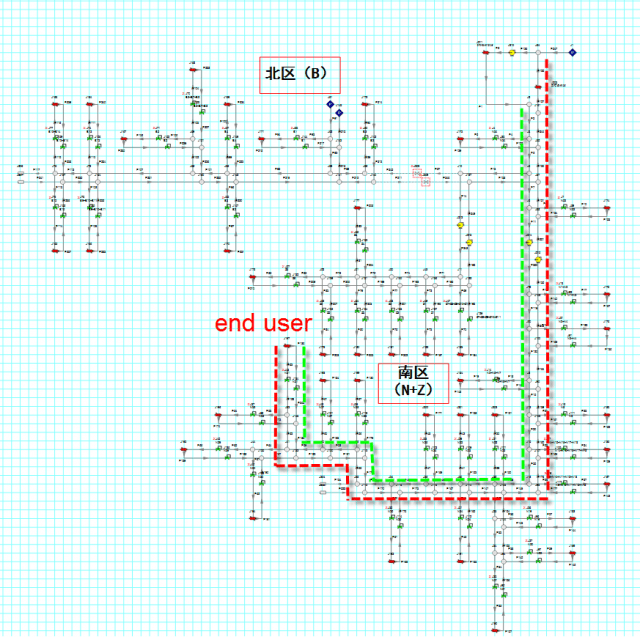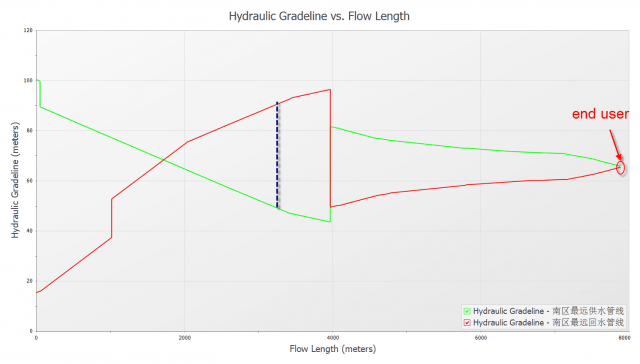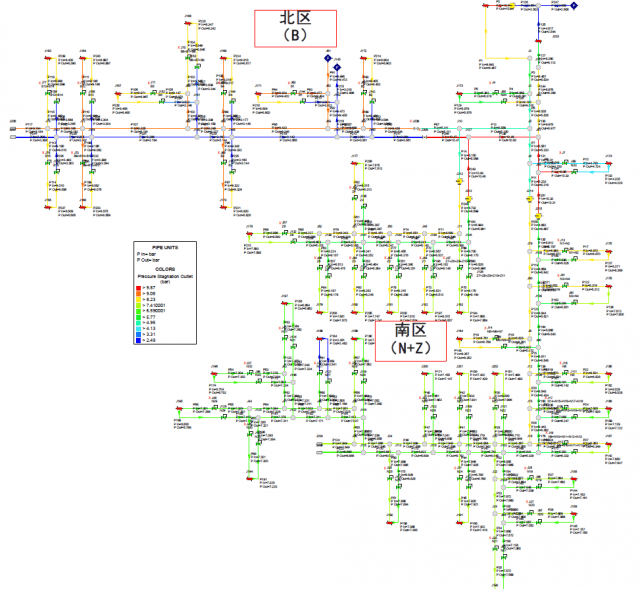AFT Blog
AFT Fathom District Heating Application
In district heating projects, hot water is the most commonly used heating medium. In order to ensure the user's heat load requirements, it is necessary to analyze and calculate the flow balance of the entire district heating system to ensure that different cases can meet the requirements of end users.
AFT Fathom is practical fluid dynamic simulation software used to calculate pressure drop and flow distribution in liquid piping and ducting systems. I think AFT Fathom is a great choice for district heating projects.The district heating network model of this project is bigger, and it includes the long supply line and return line, several booster pump stations, about 50 end users(exchangers), many control valves. This project has been running for 2 years, but some end user cannot get enough heat, so the owner hope us to get the reason.
I quickly create the supply line by dragging and dropping components, and specify pipe data using the built-in pipe database and fitting & loss database. I use copy & paste feature to get the return line which is the very good function of AFT Fathom. Then I add exchangers, pumps, control valves and get the whole district heating model(see the below picture) in 5 hours.
AFT Fathom allows users to specify the water temperature for the supply line and the return line respectively, and automatically obtain the physical properties of the hot water at the corresponding temperature.
I use AFT Fathom"Plot Multiple Paths Using Groups"of Graph Results Tab to get the water pressure map(the below picture) the water supply and return lines of the hot water system. The green line is the hydraulic gradeline of the supply line, the red line is the hydraulic gradeline of the return line.
From the above figure, we can see the red line is above the green line from 1800m to 4000m. The end user at 3000m has insufficient water supply pressure difference, even negative value, this user cannot get enough heat from district heating system. I suggest If this user want to get enough heat, the owner can add the booster pump at the user site.
AFT Fathom also indicates in the warning where the hot water is not enough, the booster pump needs to be added, and the required pump head also gives an estimate. The details are as follows:AFT Fathom also can calculate the pressure of each pipe in the entire model and presents different colors depending on the pressure.
At last I create some scenarios based on partial load of the district heating project, and get the pump operation point, each control valve open percentage, and so on. These data help the owner improve operation plans and develop more rational and economical operational plans.








Comments